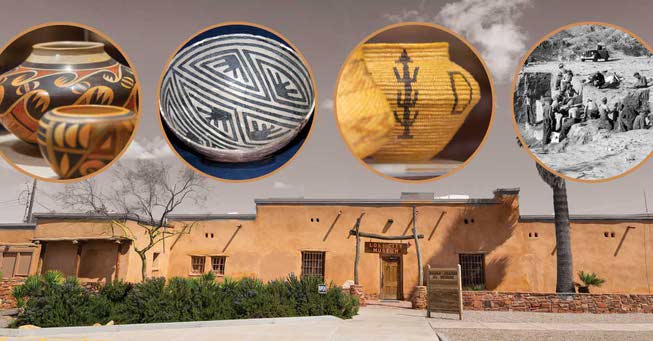
Thursday, Feb. 22, 2024 | 2 a.m.
Powered by Nevada Division of Museums and History
A hundred years ago, the Lost City was uncovered in lower Moapa Valley in one of the area’s most significant archaeological discoveries. For more than a thousand years—1 CE to 1250 CE—the Ancestral Puebloan people lived in areas that are now covered by Lake Mead, building, mining, creating and thriving.
A brief history of the Ancestral Puebloans in Southern Nevada
The first inhabitants to the area were Basketmakers, a Native American culture predating Ancestral Puebloans. Some researchers believe they may have arrived to the region earlier than 300 CE, with evidence indicating human settlements as early as 8000 BCE. Over time, Ancestral Puebloan culture moved into the area in an unusual intermingling of lifestyles, according to the National Parks Service. Basketmakers built homes in a pit-house form, with structures extending into the ground. Puebloans favored adobe above-ground structures that were often elaborate and could include 20 rooms or more.
Archaeologists unearthed tools, food, jewelry and other artifacts near home sites and in nearby prehistoric salt caves that Ancestral Puebloans mined for community and trade use. The first salt caves were excavated in 1925, uncovering pottery, stone clubs and yucca sandals.
The Ancestral Puebloans of the lower Moapa Valley were the western-most settlement, with other Puebloan groups found in the Four Corners area.
The uncovering of the Lost City
The Ancestral Puebloan villages of lower Moapa Valley were first documented in 1827. In 1924, brothers from Overton rediscovered the site and brought state and national attention to the area. Then-Gov. James Scrugham enlisted the help of archaeologist Mark Harrington, and Harrington worked closely with Willis Evans, an archaeologist and Pit River Indian who was instrumental in the early archaeological excavations in the Southern Nevada, central Nevada and Arizona regions.
Harrington dubbed the lower Moapa Valley settlement the Pueblo Grande de Nevada, and he and his team worked diligently to excavate as much of the area as possible before some parts were flooded during the building of the Hoover Dam.
The primary excavation of the Pueblo Grande de Nevada began in 1924 and continued on and off until 1938.
Origin of the museum
In 1935, the Civilian Conservation Corporation built the Boulder Dam Park Museum to showcase the findings of the Pueblo Grande de Nevada. The National Park Service turned the museum over to the state in the 1950s and it was renamed the Lost City Museum.
About the Lost City Museum
The Lost City Museum celebrates and protects the ancient artifacts of the Ancestral Puebloans and their predecessors. Located 70 miles northeast of the Strip and south of Overton, the Lost City Museum is an easy daytrip from Las Vegas. It’s also only 10 miles from the Valley of Fire State Park, the largest and oldest state part in Nevada, and a stone’s throw from the Lake Mead Recreation Area.
Listed on the National Register of Historic Places, the museum features three exhibition galleries, a screening room, a research library, and outdoor exhibits, including a Native American pit house and reconstructed pueblos. The museum also does a monthly artist showcase and other temporary exhibits displaying Native American life in the area.
Visit the Lost City Museum
721 S Moapa Valley Blvd. Overton, NV lostcitymuseum.org. 702-397-2193
